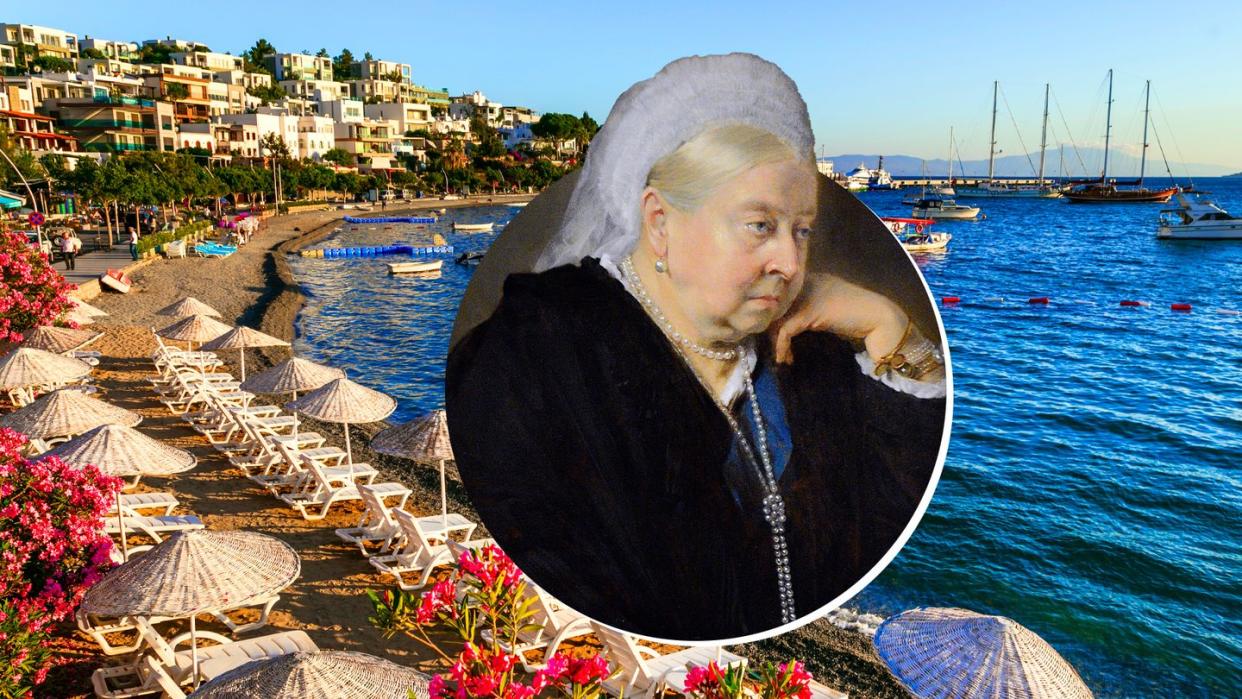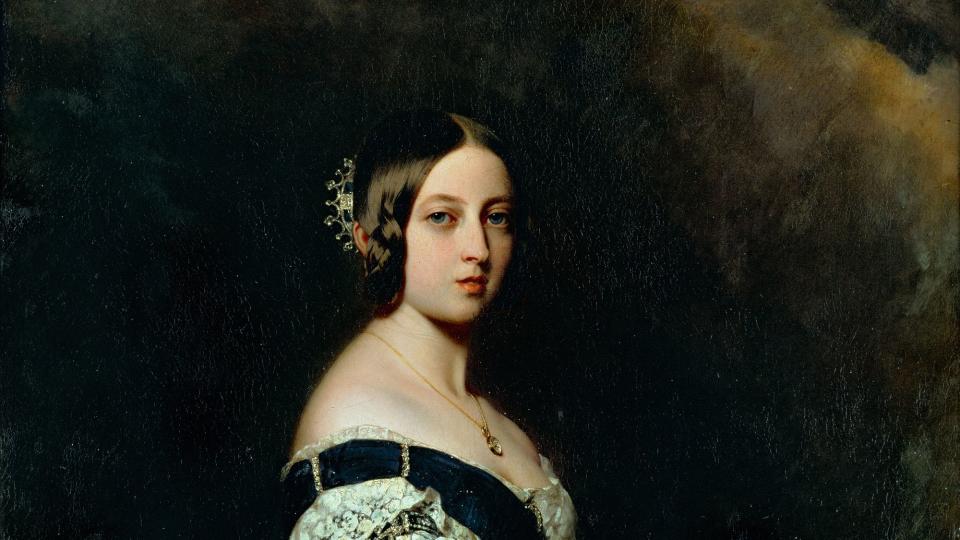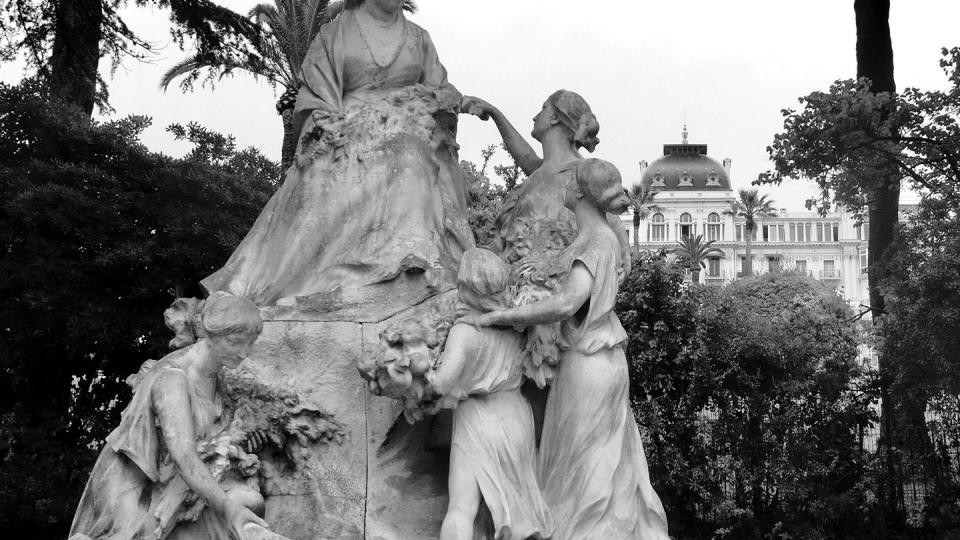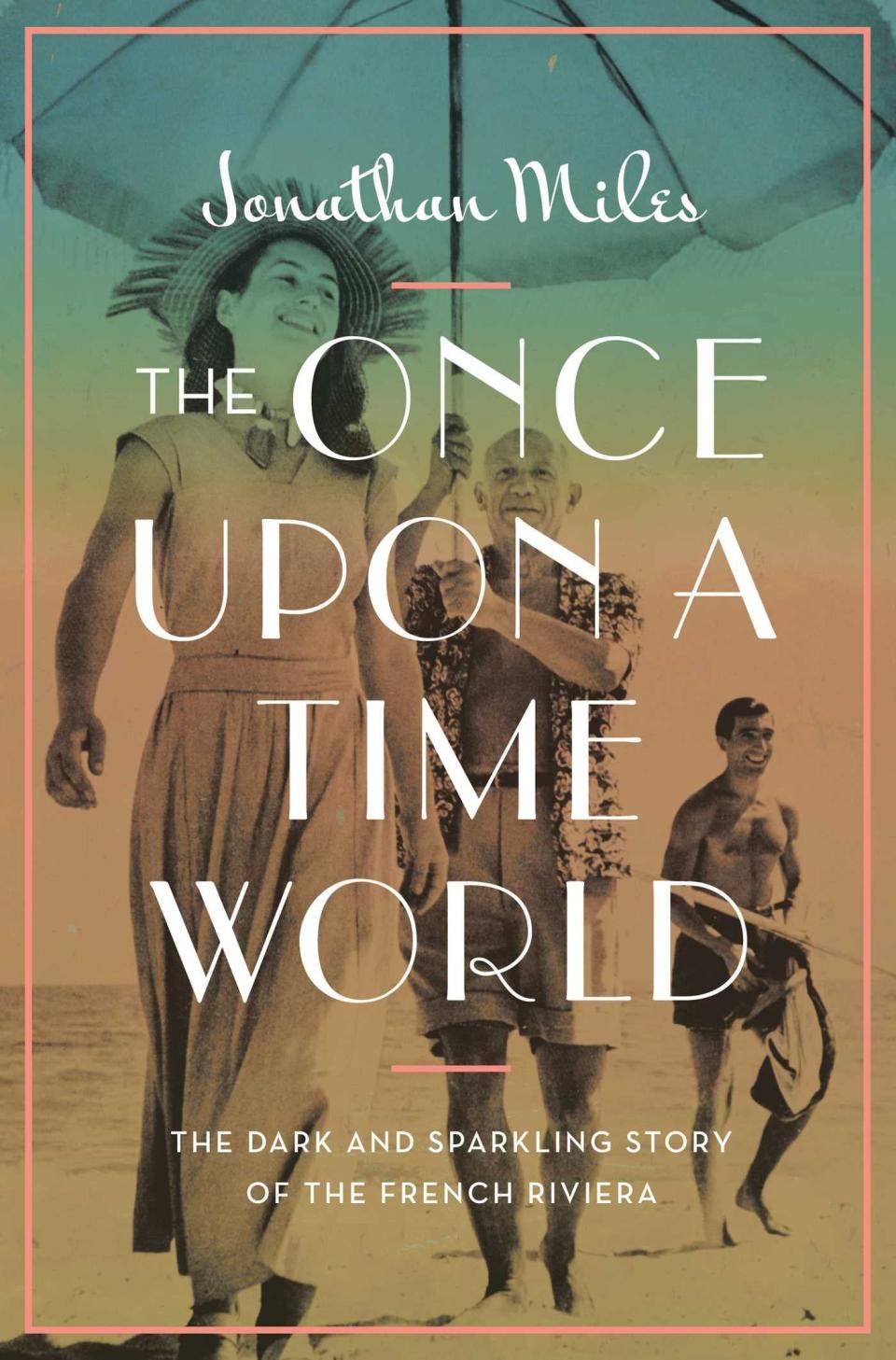The Surprising Story of Queen Victoria, Travel Influencer

"Hearst Magazines and Yahoo may earn commission or revenue on some items through these links."
The queen travelled through France incognito, posing as the Countess of Balmoral. Xavier Paoli, the French special commissary detailed to protect foreign royalty on French soil, suggested that it was a disguise "to which she attached great importance" but which "did not deceive a soul." The royal train comprised seven coaches—two of them, the queen’s private property. One of these was Victoria’s saloon-carriage, which Paoli noted was "padded throughout in blue silk" and "presented, in its somewhat antiquated splendor, the exact appearance of an old-fashioned apartment in a provincial town." Victoria’s Scottish doctor, Sir James Reid, recalled the journey. They travelled at 35 miles per hour during the day and 25 at night. They stopped every morning for the queen to dress and for the gentlemen to shave. The train also paused for meals. While excellent French menus were enjoyed by many who were traveling, the queen dined on food brought from Windsor, including an Irish stew which was kept lukewarm in red flannel pouches hung from the carriages—an unappetizing practice that persisted on the queen’s subsequent visits to the south.
Somewhat spoiling Victoria’s delight in Menton was the knowledge that her abrupt, short-tempered companion, John Brown, disliked the town. Anxious about a spurious threat from Irish revolutionaries, he despaired of the attention his kilt provoked among the locals. His surliness was exacerbated by his sufferings from the disease that would kill him the following year. Victoria’s trip was short. Leaving for home on 12 April, she was sad yet "grateful to have been permitted to spend four weeks in that lovely and far famed Riviera."

Victoria’s seven visits during the 1890s consolidated the prestige of the Riviera resorts, lending a sense of stability to a capricious coast. Amid the slew of aristocratic reprobates—her son and heir included—she lent a sense of regal respectability. For the aging queen, the Riviera was a tonic—a maid-in-waiting noted that in the south "she enjoys everything as if she were 17 instead of 72." The short, apparently dour monarch who—it seemed to onlookers—owned only one black dress, was energized, even liberated by the south. The 72-year-old fulfilled diplomatic and familial obligations. The 17-year-old had fun.
Having delighted in the Hanbury gardens at La Mortola in 1882, one of the principal reasons for visiting Grasse in 1891 was to view the meticulously planned garden which Alice, Baronness Rothschild laid out over 333 acres on either side of the road leading north from the town. The baroness employed 90 terrified gardeners who were charged with maintaining its perfection. Rumor has its he upbraided the queen when she inadvertently trod on a flowerbed and crushed several plants.

There were flowers everywhere around Grasse. In February—mimosas; March—violets; April—daffodils; May—roses and orange flowers. From June to September, there was the tuberose; and from August to October, jasmine. These blooms sustained the 50-odd perfumeries for which Grasse was famous. During May, the principal period of distillation, the town consumed 45,000 kilos of roses and 15,000 kilos of orange flowers a day. After the queen’s visit to the parfumerie, the March violets were re-baptized the violette Victoria. During the town’s carnivalesque Battle of the Flowers, Her Majesty much enjoyed pelting the masquerading crowd from the balcony of her hotel. When she ran out of flowers and craved more, enterprising servants gathered those flung down onto the street and returned them to their sovereign.
For the courtiers who often found the weather at Balmoral "deplorable," a trip to the south of France was welcome. But at Grasse in the spring of 1891, the weather was unkind. The wind was sharp, yet Victoria still insisted on her daily drive in an open carriage. Marie Mallet recorded that while the mistral was raging, "we drove for two hours... along a dusty road and returned as white as millers!" Victoria succumbed to a bad cold, her doctor suffered from a sore throat, the cook had diphtheria. Meanwhile, there was an outbreak of smallpox in the town and, at the queen’s command, the royal entourage was vaccinated. To cap it all, Elizabeth, the queen’s personal housemaid, died of blood poisoning.

Death was never very distant during Victoria’s visits to the south. Marie Mallet wrote from Grasse on 10 April, "It is very curious to see how the Queen takes the keenest interest in death and all its horrors, our whole talk has been of coffins and winding sheets." Three days later, Mallet wrote, "Today being bitterly cold the Queen elected to drive to Cannes cemetery and visit the tombs of various friends. We started soon after 3:30 and were not home till ten to seven!" Victoria’s previous visit to the Riviera, in 1887, had been to Cannes to see the Church of St. George built in memory of her son Leopold—the hemophiliac and mild epileptic—who died there in 1884. The queen’s 1892 trip to Hyères was tainted by her mourning for her eldest grandchild and heir presumptive, Prince Albert Victor. Premature at birth, slow at study, this shadowy figure known as "Prince Eddy" has attracted a multitude of rumors. He was linked to the Cleveland Street male brothel scandal and the death of a suicidal chorus girl who swallowed carbolic acid. He has even—with a convoluted set of coincidences that would bet he envy of any conspiracy theorist—been proposed as a possible Jack the Ripper, who murdered and mutilated five–or possibly eight–women in London’s East End during the autumn of 1888.
When Victoria and Lord Salisbury were both on the Riviera, they met regularly. The eccentric, bearded politician owned an Italianate villa at Beaulieu and rode around the Cap Ferrat peninsula on a tricycle. Serving as Foreign Secretary during his premiership, the conversations that the queen and her first minister shared while they holidayed on the Riviera dealt with important international issues. Foremost among them was the tension caused by a botched attempt to overthrow President Kruger of the South African Republic and the massive influx of British gold-diggers to the Transvaal—events that would eventually trigger the Second Boer War of 1899–1902. The issue that absorbed monarch and minister towards the end of March 1896 was the French and Russian opposition to British initiatives in Egypt and Sudan, and their planned railway from PortSaid to Cape Town that would enable trade, troop movement and further colonization. To counter Russian hostility to the British in Egypt, when Dowager Empress Maria Feodorovna visited the queen, Victoria merely asked her to mention the matter to Tsar Nicholas II. However, disagreement between France and England almost erupted into war two years later, with the 1898 Fashoda Incident in which the French sought to take control of the Upper Nile and block British access to Sudan. This, along with the queen’s sympathy for the "martyr" Alfred Dreyfus—the Jewish scapegoat accused of passing French military secrets to the Germans—incensed the French. Her Majesty’s opinions on the subject—relayed by a coded telegram to her embassy in Paris in October 1898—were leaked to the press. The hostility that ensued threatened Victoria’s 1899 visit to Cimiez, although the trip did go ahead. In fact, she enjoyed herself so much that she prolonged her stay until the beginning of May–a total of 51 nights.

Away from the court and diplomatic meetings, Victoria delighted in the life of Nice. She was always welcomed, early in a visit, by the market women who came bearing flowers. When in 1899they arrived "with vast bouquets for the Queen and Duchess of York, the latter had to submit to a smacking kiss on either cheek from the fattest and most 'garlicky' of the worthy fish-wives," who also insisted on embracing the equerry Colonel Carrington and the queen’s doctor, Sir James Reid. Victoria gave generously to local beggars, well aware that, at times, she was being taken for a ride—"I prefer to make a mistake in giving than to make a mistake in not giving." During a drive to Villefranche, Marie Mallet noted that the "beggars were the chief excitement." The queen "was delighted to recognize old friends and they were equally charmed" to know that her generosity showed no signs of abating. She was regularly so generous to a one-legged pauper pulled around Nice by two dogs that the man took the liberty of inscribing his cart "By Special Appointment to her Majesty." After he obliged the queen by removing the inscription, Her Majesty continued to give.
Anti-royalist and anarchist rumblings caused extra anxiety for the security services. While the people of Nice had very warm feelings for Queen Victoria, it was a city with a "fluctuating and cosmopolitan population" that "could easily contain disorderly elements." When the queen visited, there were usually two or three English men o’war anchored in the bay of Villefranche along with 15 ships of the French Mediterranean Squadron. When Victoria occupied an entire wing of the newly constructed Excelsior Hôtel Régina from 1897, she had a private entrance which neededp rotecting without a demonstrable show of force. Xavier Paoli commented that never "was the police service around an illustrious personage organized with greater reserve and discretion." For Victoria’s long country drives, Paoli sent detectives disguised as tourists to cover the planned route.

The Once Upon a Time World: The Dark and Sparkling Story of the French Riviera
amazon.com
On 1 May 1899, Queen Victoria lamented going north—every year she was growing fonder of Cimiez. Intending to visit again in 1890, strong feelings stirred by stories of the brutality of the Boer War led to a cancellation. There were anti-British music hall sketches. In satirical revues, Victoria was depicted bent over Kruger’s knee being whipped by two Boers. In shops along the Riviera, signs saying "English Spoken" were replaced by "American Spoken" as the conflict took its toll. The local Anglo-American Gazette reminded its readers that "whilst sons and lovers are over the seas defending our empire... the large leisured class for whom the winter sun of the Riviera has become a necessity, will return to its accustomed haunts." Nonetheless, it declared that it would be a sad Christmas and reported that, even at Monte Carlo, all the talk was of the war, putting a damper on festivities. The season, it concluded, would be "a dismal failure."
Over two decades, Victoria spent nearly a year on the Riviera. When she left on 2 May 1899, she would never return to the "beautiful country" which she loved and admired. Four days after the queen’s death on 22 January 1901, the Menton and Monte Carlo News published a tribute: "'Victoria the Good,' the Queen mother of the countless millions of our mighty Empire is mourned by more sorrowing subjects than any monarch that ever existed."
Excerpted from The Once Upon a Time World by Jonathan Miles. Published by Pegasus Books, 2023.
You Might Also Like

